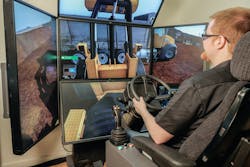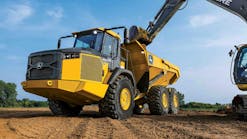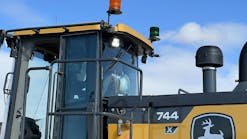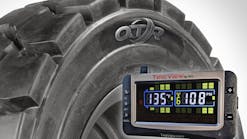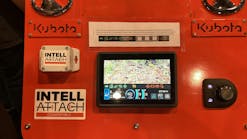Simulator Choice Banks on Increased Technology
Much as we’ve seen with increasingly elaborate video games, more and more technology is being engineered into simulators for equipment training, with scientific research to back it up.
Training via simulator can be an option for managers who want to save fuel, reduce the wear burden on machines, and conduct learning in a safe environment—and it’s important to note that simulators don’t necessarily have to come from OEMs themselves.
The wheel loader-training module that CM Labs Simulations has added to its Vortex line of construction equipment training products includes five video screens, adding an upper and lower view to the usual three-screen panoramic left-to-right arrangement.
Not specific to any OEM, the Vortex version of a wheel loader is a composite 13-ton loader based on OEM machines, and includes bucket, forks, and truss boom tools. It’s a 4-speed, all-wheel-drive open-differential unit, with options for both automatic and manual transmissions.
Similar to the simulators you’re used to seeing in dealerships, at manufacturers, and at trade shows, the training module features progressive learning exercises—from beginner to advanced—designed to gradually build student skills and confidence.
The objectives range from basic understanding of the controls and vehicle/bucket positioning to earthmoving and transport, excavation, truck loading, and safe load handling.
But Vortex goes even further. Its training module features advanced simulations for soil digging, piling, erosion, and compaction. The company says its modules are the result of decades of research, with the wheel loader simulation built on “proven Vortex dynamics and includes complete simulation of the mechanical and hydraulic systems, and interactions with the worksite.”
The goal is a level of realism that helps trainees develop skills and job site awareness that will transfer directly to the real machine.
How real? Even variations in lighting and shadows can also be approximated for the time of year. Weather effects such as rain, snow, and fog, also can be programmed in.
Simulation of the loader’s hydraulics system and transmission are designed so trainees feel like they are driving the real thing, with machine feedback coming to them at all times. Trainees are said to experience changes in hydraulic pressure, engine RPM, and terrain surface.
The result is realistic simulation of soil flow, erosion, and compaction—operators will feel resistance as they “dig in,” just like in real life, the company says.
That simulation of soil digging and dumping is based on the firm’s research into earthmoving simulation, and hundreds of peer-reviewed academic research papers.
Vortex offers the multi-screen Vortex Master simulator (above) with optional motion base, and a desktop-based Vortex Trainer for the budget-conscious. The wheel loader module can run with either setup.
Another option, an instructor’s station, lets an instructor create audio and visual distractions to challenge the operator. The optional student management system allows instructors to generate reports from training sessions and review current and past performance.
"The Vortex Simulator is one of the greatest tools we have," says Dub Huggins, training manager at Crane Service Industries, Bakersfield, Calif. "Vortex reduces the time that we have to spend out on the equipment, and it has reduced our maintenance and fuel costs phenomenally. The wear and tear reduction on the equipment out there has been dramatic."
The Vortex training suite already includes rough-terrain crane, tower crane, tracked hydraulic excavator, and other training modules.
